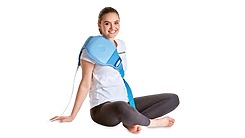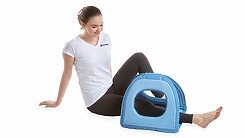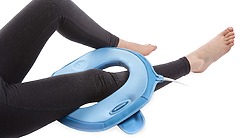Biomag - Encyclopedia - Arthritis of the joints
Arthritis of the joints - symptoms, description and treatment

Author MUDr. Peter Bednarčík CSc.
Revision
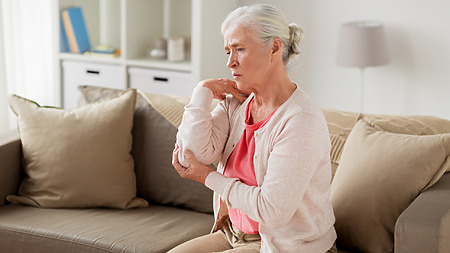
Do your joints hurt, both at rest and when moving? Are your joints stiff, especially after prolonged periods of inactivity? For example, after waking up in the morning? That’s exactly what arthritis of the joints can look like. Arthritis of the joints is often accompanied by restricted mobility and a reduced quality of life.
Find out what exactly arthritis of the joints is, what are the causes of its occurrence and, most importantly, the options for its treatment. How to suppress symptoms such as pain, swelling and inflammation that often accompany arthritis of the joints? Read more here.
Joint arthritis - symptoms
- Joint swelling
- Joint pain
- Joint stiffness
- Reddening
- Limited mobility is common for patients who have inflammation in the joints [1]

Only a physician can make a correct diagnosis. Do not use this or any other article on the internet to make a diagnosis. Do not delay seeing a physician and address your medical condition in a timely manner.
Joint Arthritis - description and causes
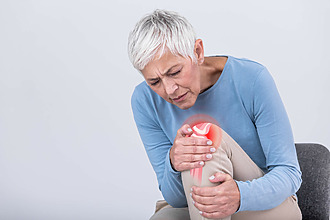
What is joint arthritis?
Arthritis is an inflammation of the joint, which is manifested by swelling, pain and stiffness of the affected joint. Redness may also be added. Limited mobility is common for patients who have inflammation in their joints.
Arthritis can affect people of all ages, genders and races and can be the result of wear and tear, infection or autoimmune disease.
Causes of joint arthritis
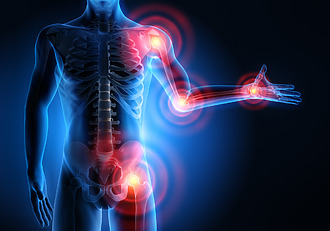
Inflammation of the joint can have various causes.
- If the inflammation is autoimmune in nature (the immune system acts against its own tissues and organs), the exact causes of such joint inflammation are often unknown.
- Heredity, environment or previous infectious diseases may be involved. [2]
- Mechanical damage to the joints caused by wear and tear that leads to the development of inflammation can also be to blame. [3]
- Inflammatory joint disease can also be related to metabolism or injury.[4]
Types of arthritis
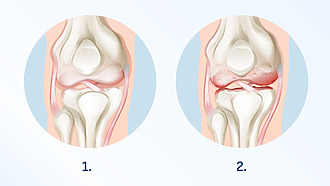
Different types of arthritis have different causes and treatments. The most common types of arthritis include: [5]
- Rheumatoid arthritis is an inflammatory joint disease in which the immune system attacks its own tissues in the joint area and damages them. [6]
- Osteoarthritis – a degenerative joint disease that can lead to the development of inflammation in the joint. [7]
- Gout – a joint disease caused by a metabolic disorder with elevated levels of uric acid in the blood. [8]
- Lupus is a disease in which the immune system attacks tissues and organs. The inflammation caused by lupus can also damage joints. [9]
- Juvenile idiopathic arthritis – the most common type of arthritis that affects children and causes them joint pain and swelling. [10]
Diagnostics
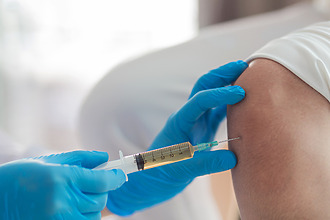
Various examination methods are used in the diagnosis of arthritis of the joints. Diagnosis begins with a detailed analysis of the patient’s health and a physical examination, followed by various tests.
- Laboratory blood tests – blood count, sedimentation rate, antibody level, kidney function parameters, blood uric acid or rheumatoid factor (a type of autoantibody) are monitored. Thanks to these results, the doctor can detect rheumatic joint disease.
- Laboratory examination of urine – for example, the presence of protein and other substances in the urine is evaluated.
- X-rays and MRI – will show the condition of the joints and surrounding structures.
- Joint aspiration (arthrocentesis) – from a sample of intra-articular fluid the cause of joint inflammation can be determined. [11]
Did you know?
- Joint arthritis affects one in four adults.
- It is more common in people over 65 years of age, but patients may include younger individuals. [12]
- Gout, a type of arthritis, affects approximately 200 men in 100,000 and 68 women in 100,000. [13]
Complications when left untreated
Failure to treat joint arthritis can lead to a number of complications that can affect a patient’s quality of life and cause permanent damage. Possible complications include:
- Joint deformity: If inflammation persists for a long time without treatment, the joints can be permanently damaged and deformed.
- Limited mobility: permanent damage to joints can lead to restricted movement and flexibility.
- Muscle atrophy: Long-term inactivity or restricted movement can cause weakening or loss of muscle mass.
- Bone erosion: Some forms of arthritis, especially rheumatoid arthritis, can lead to erosion of bone tissue.
- Osteoporosis: An increased risk of fractures due to bone loss may be associated with some forms of arthritis and with certain drugs used to treat arthritis.
Joint deformity
Limited mobility
Muscle atrophy
Osteoporosis

We recommend not postponing the treatment of joint arthritis
Do not delay treatment for joint arthritis, and if you have any health problems or doubts about your health, see a specialist. This will prevent unnecessary health complications.
Joint arthritis treatment
The method of treatment for joint arthritis depends on many factors. The decisive factors are the symptoms, the age of the patient, the general state of health and the severity of the disease.
Treatment often involves a number of specialist doctors – an orthopaedic surgeon, rheumatologist, rehabilitation doctor, internist, but also a psychiatrist or psychologist. Joint arthritis cannot be completely cured, so treatment focuses on relieving pain and inflammation and supporting joint function. [14]

Beware
Treatment for joint arthritis can only be determined by your doctor after considering your overall health. Therefore, do not use this article as a guide to treatment, which can only be determined by a doctor.
Medication for arthritis
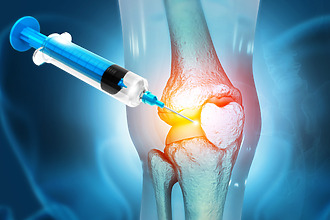
Non-steroidal anti-inflammatory drugs are used for arthritis pain and inflammation.
For example, long-term patients take medications known as DMARDs – disease-modifying antirheumatic drugs, or corticosteroids.
Joint immobilization
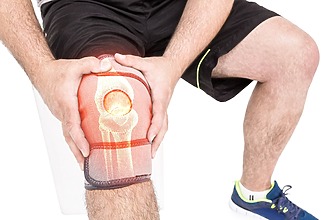
Short-term relief and “rest” for the joint can bring a brace.
Immobilising the joint can reduce the risk of further damage or injury.
Hot and cold compresses
Dry heat in the form of compresses relieves rheumatic joint pain. Conversely, cold compresses reduce swelling.
Surgical operation
In some patients, it is necessary to address arthritis of the joints with surgery. There are a number of different surgical procedures ranging from arthroscopy to replacing the damaged joint with an artificial one. Surgery is followed by rehabilitation under the guidance of a physiotherapist.
Alternative methods
Arthritis of small joints, rheumatism in the knee or joint rheumatism in general. In all these cases, alternative therapies such as massage or acupuncture can help patients relieve pain and swelling. [15]
Lifestyle changes
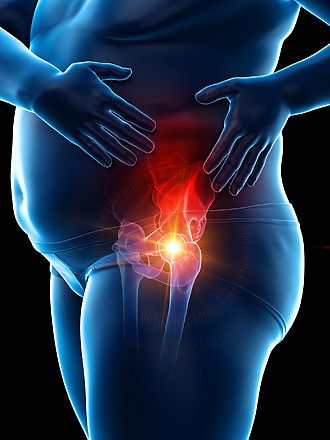
Various regimens contribute to a better quality of life in arthritis.
- Overweight people are advised to reduce their weight.
- Every patient should take time for appropriate exercise (swimming, walking, stretching exercises) and adequate physical rest.
- For people at risk of gout, a well-formulated diet with limitation of red meat and alcohol is important. [16]
Joint arthritis prevention
Although in many joint diseases, patients cannot control whether problems occur and how intense they are, it is worth taking basic precautions. These include maintaining a healthy weight, regular physical activity with an emphasis on injury prevention and proper exercise. In the event of problems, it is important to seek medical attention early and not to ignore pain or other symptoms of illness. [17]
Life with arthritis
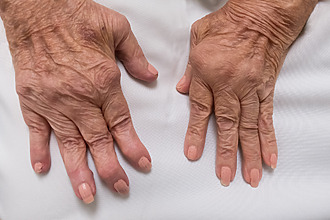
The life of patients with arthritis of the joints brings various pitfalls. Pain and impaired mobility can limit many work and leisure activities. It is therefore worth taking the time to modify the environment in which you spend your time.
- Store things so that they are within easy reach.
- Use a variety of electrical appliances in the kitchen to reduce the strain on the joints in your hands.
- Minimise the risk of fall, for example by making the handrail at the stairs easily accessible.
A healthy and balanced diet is important in arthritis to get all the nutrients you need and maintain a healthy weight. Being overweight puts a strain on the joints and worsens pain and mobility.
Regular exercise can relieve arthritis pain and improve joint mobility. Muscle strength is also important and can be gained through appropriate strengthening exercises. Sport also helps to maintain good mental fitness. [18]

Important warnings when dealing with joint arthritis
Joint arthritis is a painful disease in which inflammation develops in the affected joint.
Treatment depends on the type of arthritis and the severity of symptoms.
It is important to follow a healthy lifestyle in terms of both diet and exercise.
Summary and recommendations when dealing with joint arthritis
See your physician
Treatment for joint arthritis is always determined by your physician based on a general examination, an assessment of your condition and an accurate diagnosis.
Causal treatment of joint arthritis
After a general examination, your physician will recommend treatment for the cause of your arthritic joints. In connection with this, he will also recommend possible lifestyle modification and further course of action.
Relieve pain, swelling and inflammation
Symptomatic treatment focuses on the manifestations or signs (symptoms) of the disease. Such treatment can significantly improve your quality of life and support comprehensive treatment as the disease progresses.
Sources, references and literature
[1] Arthritis. Mayo Clinic, 15. September 2021. Available at: https://www.mayoclinic.org/diseases-conditions/arthritis/symptoms-causes/syc-20350772
[2] Juvenile Idiopathic Arthritis. Mayo Clinic, 5. October 2022. Available at: https://www.mayoclinic.org/diseases-conditions/juvenile-idiopathic-arthritis/symptoms-causes/syc-20374082
[3] Arthritis. Mayo Clinic, 15. September 2021. Available at: https://www.mayoclinic.org/diseases-conditions/arthritis/symptoms-causes/syc-20350772
[4] Arthritis. Johns Hopkins Medicine. Available at: https://www.hopkinsmedicine.org/health/conditions-and-diseases/arthritis
[5] Arthritis. Mayo Clinic, 15. September 2021. Available at: https://www.mayoclinic.org/diseases-conditions/arthritis/symptoms-causes/syc-20350772
[6] Arthritis. Mayo Clinic, 15. September 2021. Available at: https://www.mayoclinic.org/diseases-conditions/arthritis/symptoms-causes/syc-20350772
[7] Medical Dictionary of Health. Harvard Health Publishing, 13. December 2011. Available at: https://www.health.harvard.edu/d-through-i#D-terms
[8] Medical Dictionary of Health. Harvard Health Publishing, 13. December 2011. Available at: https://www.health.harvard.edu/d-through-i#G-terms
[9] Lupus. Mayo Clinic, 21. October 2022. Available at: https://www.mayoclinic.org/diseases-conditions/lupus/symptoms-causes/syc-20365789
[10] Juvenile Idiopathic Arthritis. National Institute of Arthritis and Musculoskeletal and Skin Diseases. May 2021. Available at: https://www.niams.nih.gov/health-topics/juvenile-arthritis
[11] Arthritis. Johns Hopkins Medicine. Available at: https://www.hopkinsmedicine.org/health/conditions-and-diseases/arthritis
[12]Nichols H. What are the causes and types of arthritis? Medical News Today, 5. January 2023. Available at: https://www.medicalnewstoday.com/articles/7621
[13] Stewart C. Incidence of gout in Europe 1990-2019, by tender. Statista, 19. June 2023. Available at: https://www.statista.com/statistics/1260716/gout-incidence-in-europe-by-gender/
[14] Arthritis. Johns Hopkins Medicine. Available at: https://www.hopkinsmedicine.org/health/conditions-and-diseases/arthritis
[15] Arthritis. Johns Hopkins Medicine. Available at: https://www.hopkinsmedicine.org/health/conditions-and-diseases/arthritis
[16] Gout. Mayo Clinic, 16. November 2022. Available at: https://www.mayoclinic.org/diseases-conditions/gout/symptoms-causes/syc-20372897
[17] Arthritis. Johns Hopkins Medicine. Available at: https://www.hopkinsmedicine.org/health/conditions-and-diseases/arthritis
[18] Living with arthritis. NHS, 8. September 2022. Available at: https://www.nhs.uk/conditions/arthritis/living-with/
| Rate this article |
|
|
5/51 Reviewed by
|
How to control pain, swelling and address inflammation?
The solution may be symptomatic treatment using pulsed magnetic therapy (PEMF therapy), which targets symptoms and signs such as pain, swelling and inflammation. In addition, such treatment can support comprehensive treatment and significantly improve quality of life.
The principle of therapy
The basic principle of Biomag 3D pulsed magnetic therapy (PEMF therapy) is the generation of electromagnetic pulses. These pulses penetrate through clothing and through the entire depth of the tissue to the point of targeted application. The pulses have specially developed biotropic parameters (e.g. frequency, shape, intensity) to best affect various health problems.
What are the effects of 3D magnetic therapy (PEMF therapy)?
- Helps relieve pain.
- Mitigates inflammation.
- Suppresses swelling.
How is the treatment applied?
The application is very simple. You select the desired therapeutic effect on the device and attach the supplied applicator to the desired application site. Magnetic therapy (PEMF therapy) is usually applied 2 times a day for 20 minutes.
We will be happy to help you try this method and advise you on which device to purchase.
